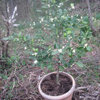Can Miracle-Gro Shake 'n Feed Citrus be used in containers?
mn_citrus
10 years ago
Featured Answer
Sort by:Oldest
Comments (12)
mksmth zone 7a Tulsa Oklahoma
10 years agomn_citrus
10 years agoRelated Professionals
La Marque Landscape Architects & Landscape Designers · Salisbury Landscape Architects & Landscape Designers · Suffern Landscape Architects & Landscape Designers · Maple Valley Landscape Contractors · Bloomington Landscape Contractors · El Sobrante Landscape Contractors · Fort Atkinson Landscape Contractors · Fort Worth Landscape Contractors · Galveston Landscape Contractors · Garland Landscape Contractors · Gloucester Landscape Contractors · New Baltimore Landscape Contractors · Newberg Landscape Contractors · San Pedro Landscape Contractors · Greenfield Landscape Contractorsmksmth zone 7a Tulsa Oklahoma
10 years agorhizo_1 (North AL) zone 7
10 years agomn_citrus
10 years agogreenman28 NorCal 7b/8a
10 years agomksmth zone 7a Tulsa Oklahoma
10 years agomeyermike_1micha
10 years agoMichael Keef
7 years agoBarbJP 15-16/9B CA Bay Area
7 years agocory (Zone 7a, NJ)
7 years ago
Related Stories

GARDENING GUIDESSpring Citrus Care Reaps Months of Sweet Rewards
Learn how to tend citrus trees in spring and ways to preserve their delicious fruit
Full Story
HOUSEKEEPING10 Chores You Can Whip Through During Commercials
Use ad time for getting tasks done, and it’s like fast-forwarding your house into cleanliness
Full Story
HOUSEKEEPINGCan-Do Cleaning Strategies for Busy People
While you dream of having a maid (to go with the cook and chauffer), this simplified cleaning routine can keep your real-world home tidy
Full Story
FARM YOUR YARDHow to Grow Vegetables in Containers
Get glorious vegetables and fruits on your patio with a pro’s guidance — including his personal recipe for potting mix
Full Story
MOST POPULAR9 Real Ways You Can Help After a House Fire
Suggestions from someone who lost her home to fire — and experienced the staggering generosity of community
Full Story
CONTAINER GARDENS7 Deer-Resistant Flowers for Your Summer Containers
Grow these as protection for edibles or just for their colorful beauty — deer might not like them, but everyone else will
Full Story
PAINTINGWhat to Know About Milk Paint and Chalk Paint — and How to Use Them
Learn the pros, cons, cost and more for these two easy-to-use paints that are great for giving furniture a vintage look
Full Story
CONTAINER GARDENSHappy Houseplants, Happy People
Potted plants add life and beauty to a room. Learn easy ways to keep them healthy
Full Story
MOST POPULARThe Perfect Houseplant for People Who Kill Houseplants
If you can fill a jar with water, you can keep golden pothos vine happy — and it will pay you back with cleaner air and a greener home
Full Story
MOST POPULARMeet a Lawn Alternative That Works Wonders
Carex can replace turfgrass in any spot, is low maintenance and adjusts easily. Add its good looks and you’ve got a ground cover winner
Full Story






mksmth zone 7a Tulsa Oklahoma